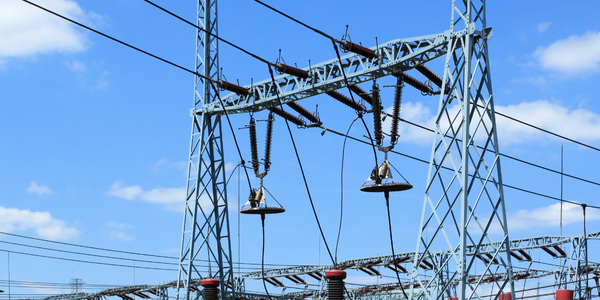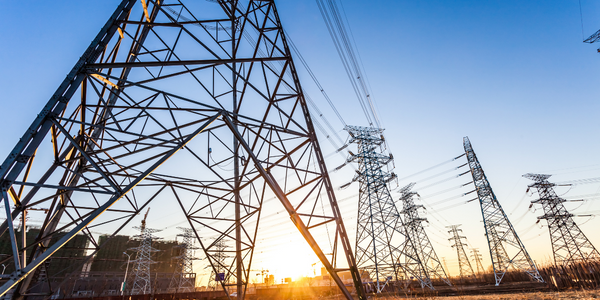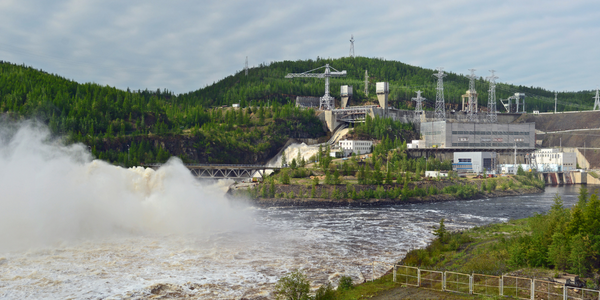Customer Company Size
Large Corporate
Region
- Asia
Country
- India
Product
- AVEVA Bocad
Tech Stack
- 3D Modelling
Implementation Scale
- Enterprise-wide Deployment
Impact Metrics
- Productivity Improvements
- Waste Reduction
Technology Category
- Application Infrastructure & Middleware - Data Visualization
Applicable Industries
- Electrical Grids
Applicable Functions
- Discrete Manufacturing
Use Cases
- Structural Health Monitoring
Services
- Software Design & Engineering Services
About The Customer
Adani Transmission Limited is a part of the Adani Group power and utilities conglomerate. The company is headquartered at Ahmedabad in the Indian state of Gujarat. Adani Transmission Limited designs, engineers, constructs, operates, and maintains electricity transmission networks across India. The company is well-respected for its fast project execution and high customer satisfaction. In under four years, Adani Transmission Limited has established around 5,000 km of transmission network to ensure that power is provided seamlessly to drive India’s growing economy.
The Challenge
Adani Transmission Limited, part of the Adani Group power and utilities conglomerate, is responsible for designing, engineering, constructing, operating, and maintaining electricity transmission networks across India. The company was tasked with a demanding project that involved the construction of hundreds of towers to carry transmission lines for an inter-state high voltage transmission line project from the new NTPC power plant in North Karanpura. The project required four different types of towers, each with unique detailing. The challenge was to work effectively across the whole design, manufacture, and construction process with no margin for error.
The Solution
Adani Transmission Limited used AVEVA Bocad software to refine the designs for the towers. AVEVA Bocad has a special module for transmission tower detailing, which includes built-in features that make it easy to develop an accurate 3D model, rotate all parts of it, and visualize the connection details from any angle. The software can also reduce the time required to generate new drawings by 40%. Using AVEVA Bocad, Adani developed an ingenious design using eccentric connectors to reduce the need for patches and braces, so that structural stress is minimized during construction. They also devised a cost-effective arrangement of secondary members to increase the strength of the tower, and developed a smart design of flange connections and notching.
Operational Impact
Quantitative Benefit

Case Study missing?
Start adding your own!
Register with your work email and create a new case study profile for your business.
Related Case Studies.

Case Study
Hydro One Leads the Way In Smart Meter Development
In 2010, Ontario’s energy board mandated that time-of-use (TOU) pricing for consumers be available for all consumers on a regulated price plan. To meet this requirement, Hydro One needed to quickly deploy a smart meter and intelligent communications network solution to meet the provincial government’s requirement at a low cost. The network needed to cover Hydro One’s expansive service territory, which has a land mass twice the size of Texas, and its customers live in a mix of urban, rural, and remote areas, some places only accessible by air, rail, boat or snowmobile. Most importantly, the network needed to enable future enterprise-wide business efficiencies, modernization of distribution infrastructure and enhanced customer service. To meet these needs, Hydro One conceptualized an end-to-end solution leveraging open standards and Internet Protocols (IP) at all communication levels. The utility drew upon industry leaders like Trilliant to realize this vision.

Case Study
Selling more with Whirlpool
Whirlpool wanted to add connectivity to appliances and transform the company's relationship with customers. Traditionally, Whirlpool interaction with customers was limited to purchases made once every ten years. Connected washer and dryers provide exciting new features like remote management of start times and inter-machine communication.

Case Study
SAS® Analytics for IoT: Smart Grid
Companies face falling revenues, rising infrastructure costs, and increasing risk of outages caused by inconsistent energy production from renewable sources. Less money is coming in as more people and organizations take steps to curb their energy use. Utilities are paying more to maintain and build infrastructure due to increasing complexity, resulting from the rising number of intermittent and variable renewable energy sources connected in the distribution grid.

Case Study
Enel Secures Italian Power Generation Network
Electric energy operators around the world are working to increase the reliability and cyber resiliency of their systems. This includes Enel, a global power company that manages and monitors the Italian power grid. This grid:• Serves 31 million customers• Has a net installed energy capacity exceeding 31 gigawatts• Includes more than 500 power generation plants,including hydroelectric, thermoelectric, and wind• Is managed and monitored by Enel 24/7/365• Is operated by Terna, the Italian Transmission System Operator (TSO)Enel is responsible for the availability of the grid’s underlying ICS and industrial network. It also manages Regional Control Centers and Interconnection Centers which connect with the TSO. The TSO manages the flow of energy to the grid plus controls and remotely regulates the power generation of power plants, increasing and decreasing power production as required. The complex system of interaction and cooperation between Enel and the TSO has strong security implications as well as operational and business challenges.

Case Study
IoT based Energy Quality Availability Monitoring Solution
There were several challenges faced:Since this data would be in the public domain, accuracy and authenticity of this data were of paramount importance. It should be able to withstand scrutiny.It is challenging to build an appliance that can withstand a wide range of voltage fluctuations from as low at 90v to as high as 320v. Since the device would be installed in remote locations, its resilience was of paramount importance.The device would have to deal with poor network coverage and have the ability to store and re-transmit data if networks were not available, which is often the case in rural India. The device could store up to 30 days of data.The platform that deals with the data should be readily available and highly reliable and never lose a packet of data.

Case Study
Hydro Utility Builds Foundation for Powerful Efficiencies and Protection
As the main British Columbia electric distributor, BC Hydro provides 1.9 million residential, commercial, and industrial customers with energy. The hydro utility transformed to a digital business with Cisco connected networking, security, and smart grid solutions. • Deliver reliable, high-quality services • Enable remote automation and monitoring • Connect applications over a common networking infrastructure



